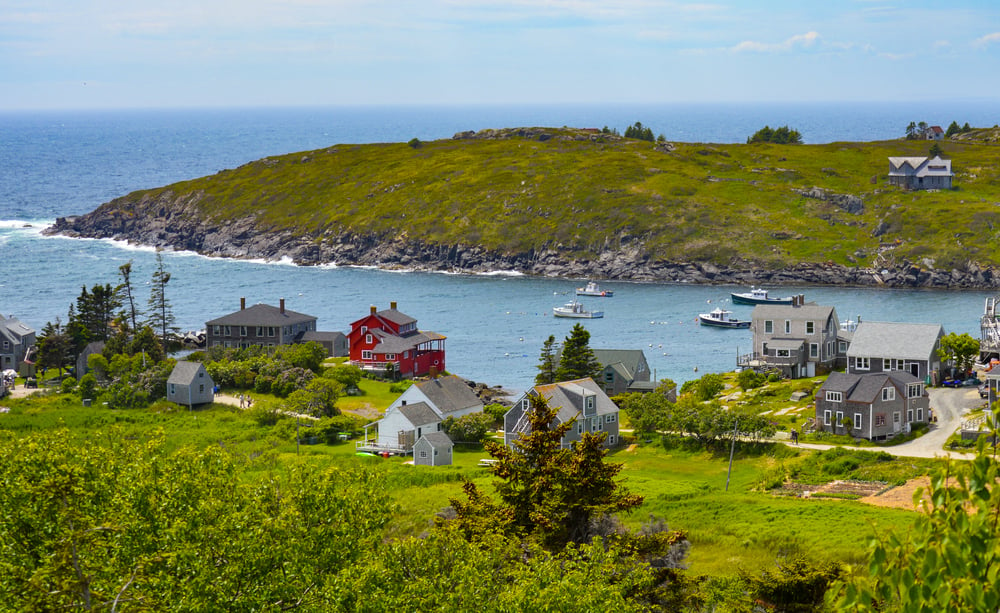First, there were the Newport “Cottages”, then came the Gold Coast mansions. Both regions have spectacular mansions built by the same rich and powerful families of the Gilded Age. The Gold Coast mansions as a whole, were depicted so acutely in the novel “The Great Gatsby” as a display of incredible wealth and consumption during the Gilded Age. These homes are monuments to to a specific time period and IMO, fascinating to look at and read about. The mansions listed here were built from fortunes stemming from a wide variety of industries – insurance, retail, oil, railroads, pharmaceuticals, steel and more. Another interesting observation is the diversity in styles of architecture.
13. Glen Cove
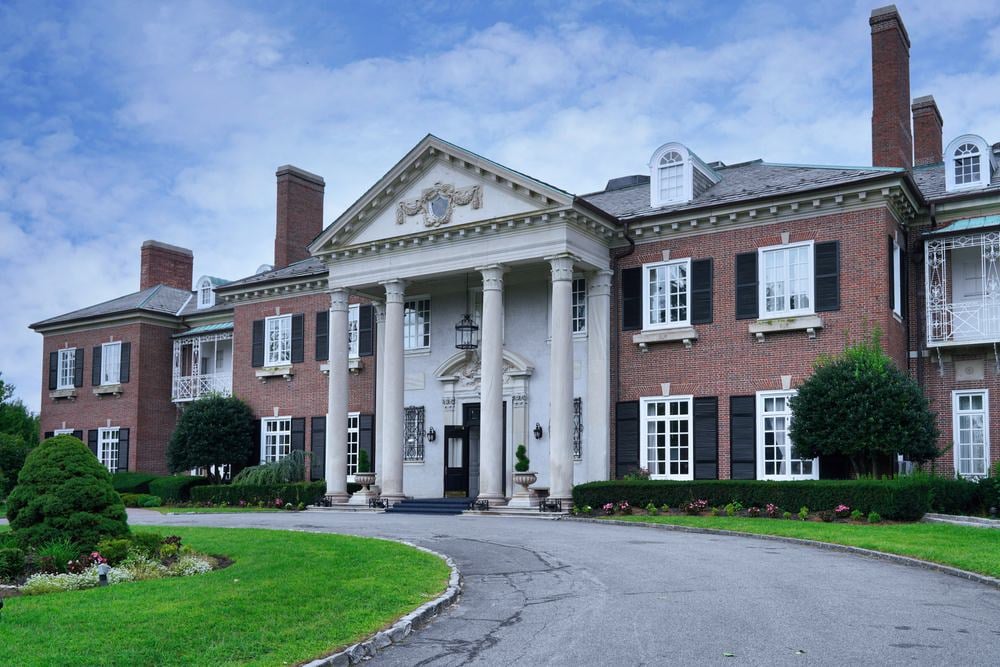
The Glen Cove Mansion, originally known as The Manor, was the estate of John Teele Pratt, a prominent lawyer and son of Charles Pratt, the oil magnate. Completed in 1910, the mansion is located in Glen Cove, Long Island, and was designed in the Georgian Revival style by the esteemed architects Charles Platt and Howard Major. The estate was part of the Gold Coast of Long Island, where many wealthy families built opulent homes during the Gilded Age. The Manor served as the Pratt family’s elegant retreat, with lavish gardens and a grand interior for entertaining. Today, the mansion has been transformed into The Mansion at Glen Cove, a luxury hotel and conference center, while still preserving much of its historic charm and grandeur.
12. Idle Hour

Up next you guessed it… a Vanderbilt mansion. No shortage of Vanderbilt mansions during the gilded age. This one is called Idle Hour and was the grand country estate of William Kissam Vanderbilt, located on the banks of the Connetquot River in Oakdale, Long Island. Originally completed in 1878, this 900-acre estate featured a large, shingle-style mansion that was designed by architect Richard Morris Hunt. Unfortunately, the original mansion was destroyed by fire in 1899. Vanderbilt rebuilt the estate in 1901 with a larger, more opulent French Renaissance-style mansion, designed by Warren and Wetmore, the architects behind Grand Central Terminal. The estate served as Vanderbilt’s summer retreat, where he entertained lavishly, enjoying yachting and horse racing. Today, the estate is home to Dowling College, preserving its rich history as part of Long Island’s Gold Coast legacy.
11. Bayard Cutting
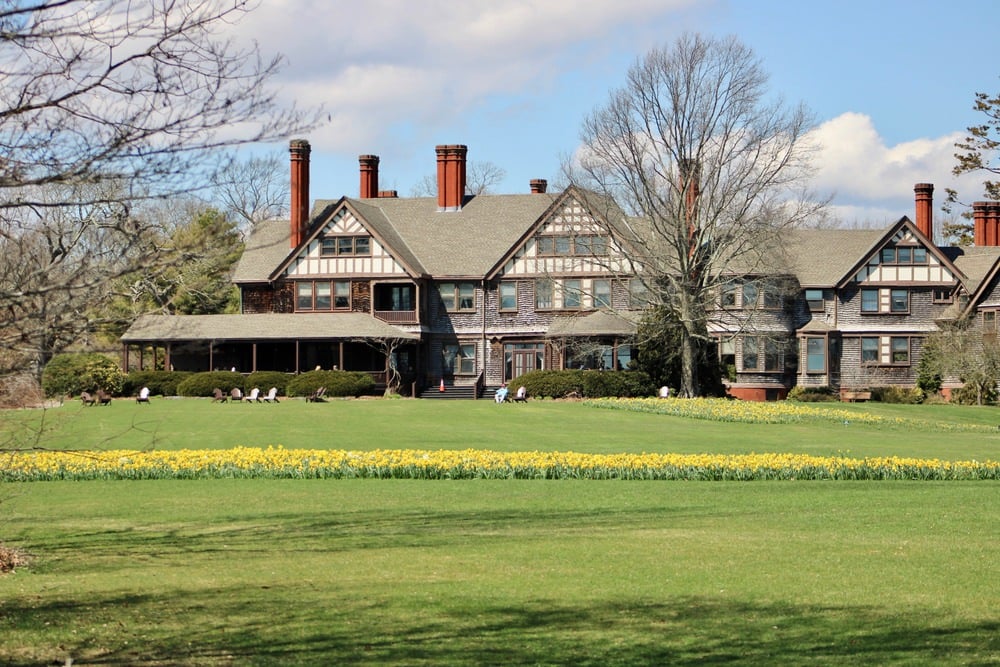
Here’s an elegant, sprawling Tudor style mansion. The Bayard Cutting estate, also known as Westbrook, was the country home of William Bayard Cutting, a prominent financier and philanthropist, located in Great River, Long Island. Completed in 1886, the mansion was designed in the Tudor Revival style by the renowned architectural firm McKim, Mead & White. The estate, set on 1,000 acres along the Connetquot River, was known for its meticulously landscaped grounds, designed by Frederick Law Olmsted, the famed landscape architect behind Central Park. Bayard Cutting used the estate as a retreat from the city, where he indulged in horticulture and hosted elegant gatherings. Today, the mansion and much of its surrounding land form the Bayard Cutting Arboretum, a public park dedicated to preserving the natural beauty of the estate and offering visitors a glimpse into Long Island’s Gilded Age.
10. Eagle’s Nest

Another Vanderbilt house lol. Eagle’s Nest, the opulent Gold Coast estate of William K. Vanderbilt II, is a striking example of Spanish Revival architecture located in Centerport, Long Island. Built between 1910 and 1936, the sprawling 43-acre estate features a stunning Mediterranean-style mansion overlooking Northport Bay. The estate, with its grand courtyards, red-tiled roofs, and ornate detailing, was Vanderbilt’s summer retreat and the centerpiece of his passion for global travel and marine exploration. The mansion houses Vanderbilt’s extensive collections of marine specimens, cultural artifacts, and rare objects gathered from his travels. Today, Eagle’s Nest is home to the Vanderbilt Museum, which offers tours of the mansion, planetarium shows, and exhibits that provide a fascinating glimpse into the life of one of America’s most prominent families. Its combination of architectural beauty, historical significance, and unique collections makes it a standout relic of the Gold Coast era.
9. Coindre Hall
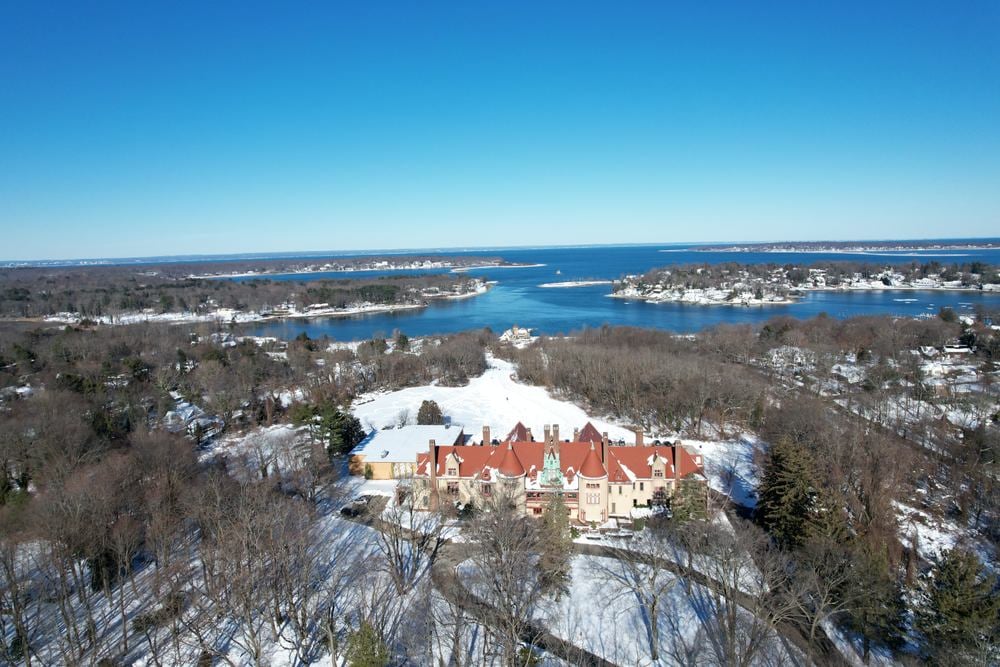
Here’s one for turret lovers. Coindre Hall, a grand French château-style mansion in Huntington, New York, was built in 1912 by pharmaceutical magnate George McKesson Brown. Nestled on over 30 acres overlooking Huntington Harbor, the mansion boasts impressive architecture with its stone façade, turrets, and elaborate detailing reminiscent of Normandy castles. Originally a private estate, Coindre Hall has since become a beloved local landmark, now serving as a park and event space. Its rich history, scenic waterfront views, and stately design make it a captivating destination for those interested in historic homes and architectural grandeur.
8. Old Westbury Gardens
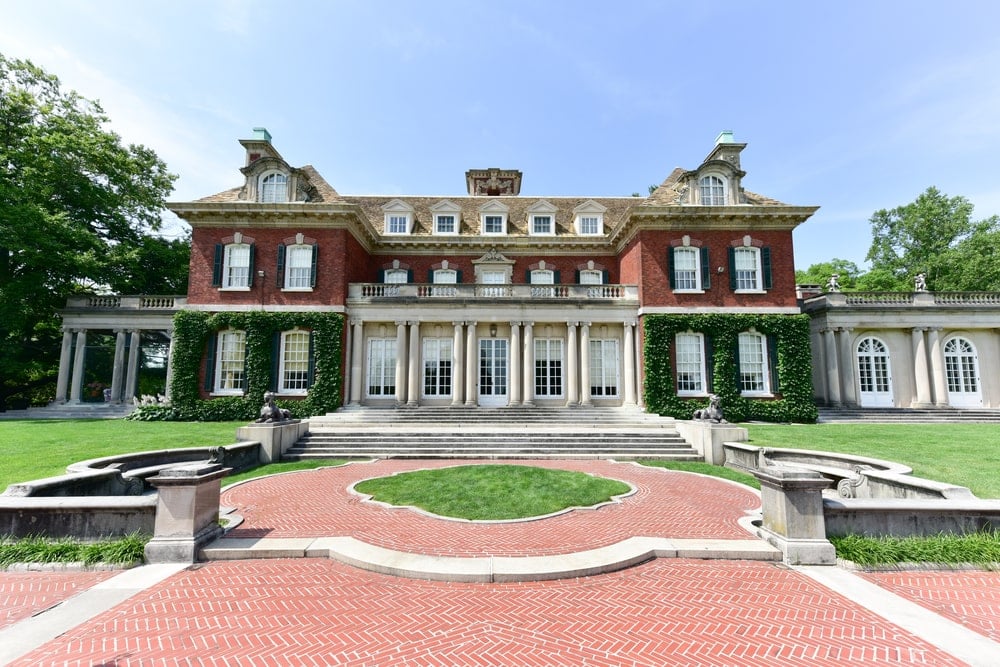
Not the biggest but it sure is gorgeous. Well preserved. Built in 1906 for John Shaffer Phipps, heir to the Phipps steel fortune, Old Westbury Gardens is a 23,000-square-foot mansion designed by architect George A. Crawley in the Charles II Restoration style. The home sits on 200 acres of meticulously landscaped gardens, ponds, and woodlands. The mansion’s red-brick façade features grand archways and symmetrical wings, while the interior is filled with antique European furnishings, wood-paneled rooms, and marble fireplaces. Known for hosting elegant garden parties, Old Westbury Gardens is now open to the public as a museum, offering visitors a glimpse into the lavish lifestyle of the Phipps family and the grandeur of Gold Coast estates.
7. Mill Neck Manor, aka Sefton Manor
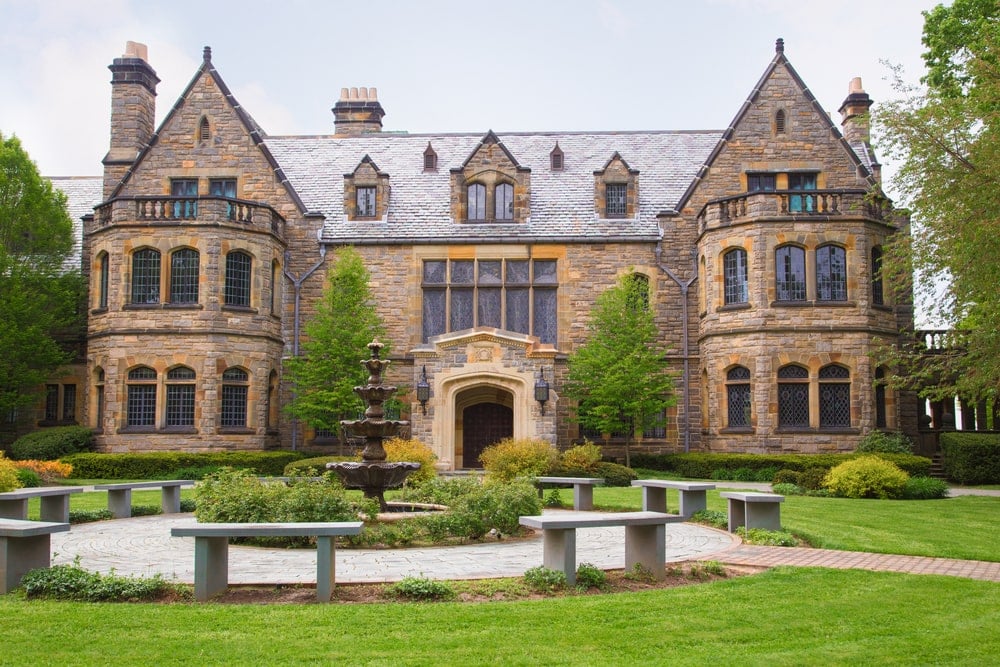
Mill Neck Manor, also known as Sefton Manor, was built in 1923 for Lillian Sefton Dodge and her husband, Robert Dodge. This 34,000-square-foot mansion was designed in the Tudor Revival style by the architectural firm Clinton & Russell. The mansion’s striking stone and timber façade, complete with turrets and leaded glass windows, evokes an English country estate. Inside, the home features a grand staircase, wood-paneled rooms, and intricately carved fireplaces. The 86-acre estate includes manicured lawns, gardens, and a private lake. Today, Mill Neck Manor is part of the Mill Neck School for the Deaf, and the mansion is preserved as a historic landmark.
6. Planting Fields
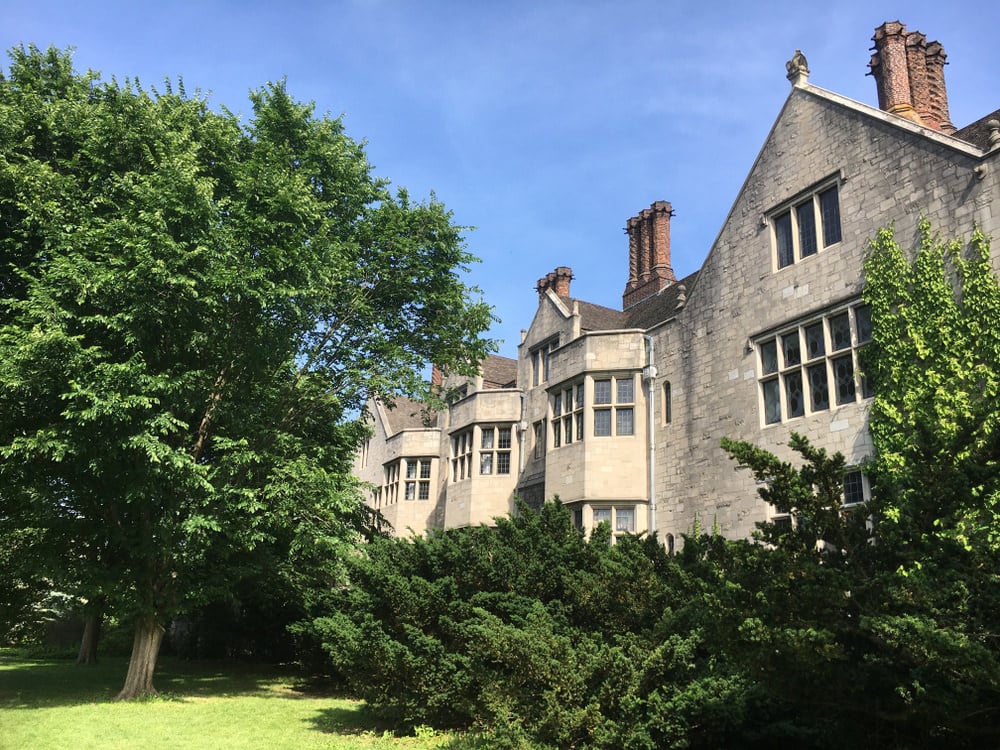
Built in 1918 for William Robertson Coe, a prominent insurance magnate, Planting Fields is an incredible mansion in Oyster Bay. Designed by architects Guy Lowell and Walker & Gillette in the Tudor Revival style, the mansion features a grand stone façade with half-timbering and expansive leaded windows. The estate is surrounded by 409 acres of botanical gardens, greenhouses, and formal lawns. The interior of the mansion includes an opulent grand hall, wood-paneled rooms, and exquisite ceiling details. Today, Planting Fields Arboretum State Historic Park allows visitors to explore both the mansion and the gardens, offering a glimpse into the Coe family’s lavish lifestyle.
5. Hempstead House
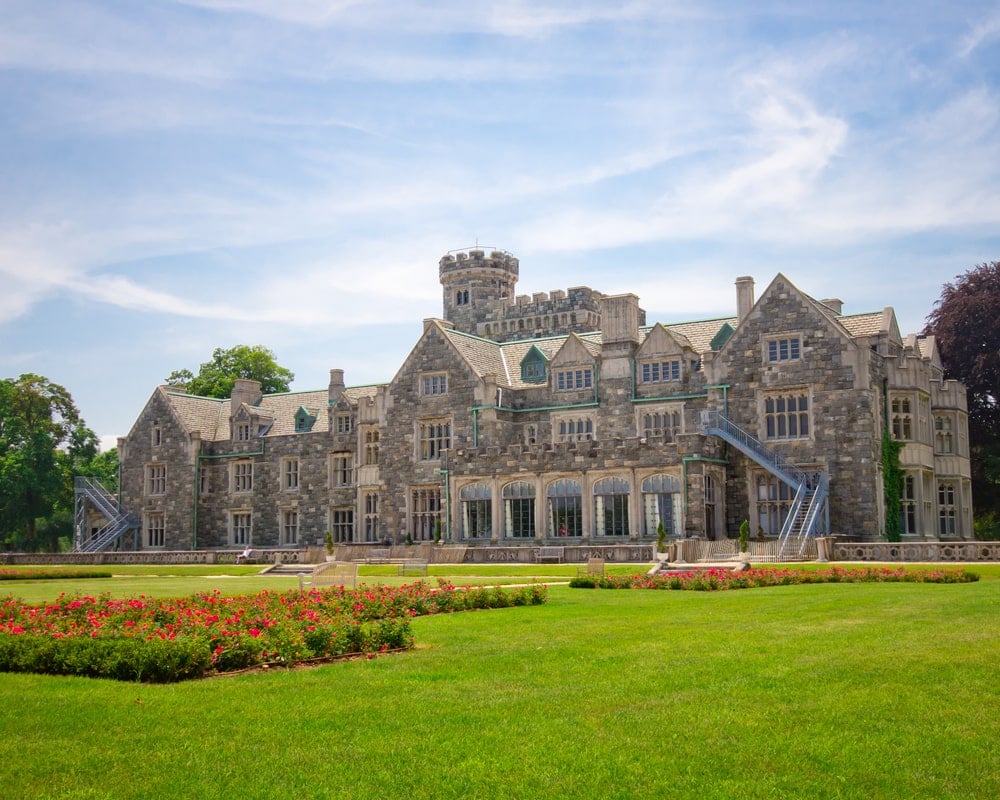
Spectacular but just a bit too goth for my liking. Completed in 1912, Hempstead House was built for Howard Gould, the son of railroad tycoon Jay Gould in Sands Point. This 43,000-square-foot mansion was designed in the Tudor Gothic Revival style, with high stone walls, steep gables, and grand towers reminiscent of a medieval castle. The home features a marble-floored entry hall, intricately carved wood paneling, and a vast library. Hempstead House is surrounded by 200 acres of gardens and woodlands that overlook Long Island Sound. After Gould sold the estate, it was acquired by Daniel Guggenheim, and today it is part of the Sands Point Preserve, offering tours and hosting cultural events throughout the year.
4. Winfield Hall
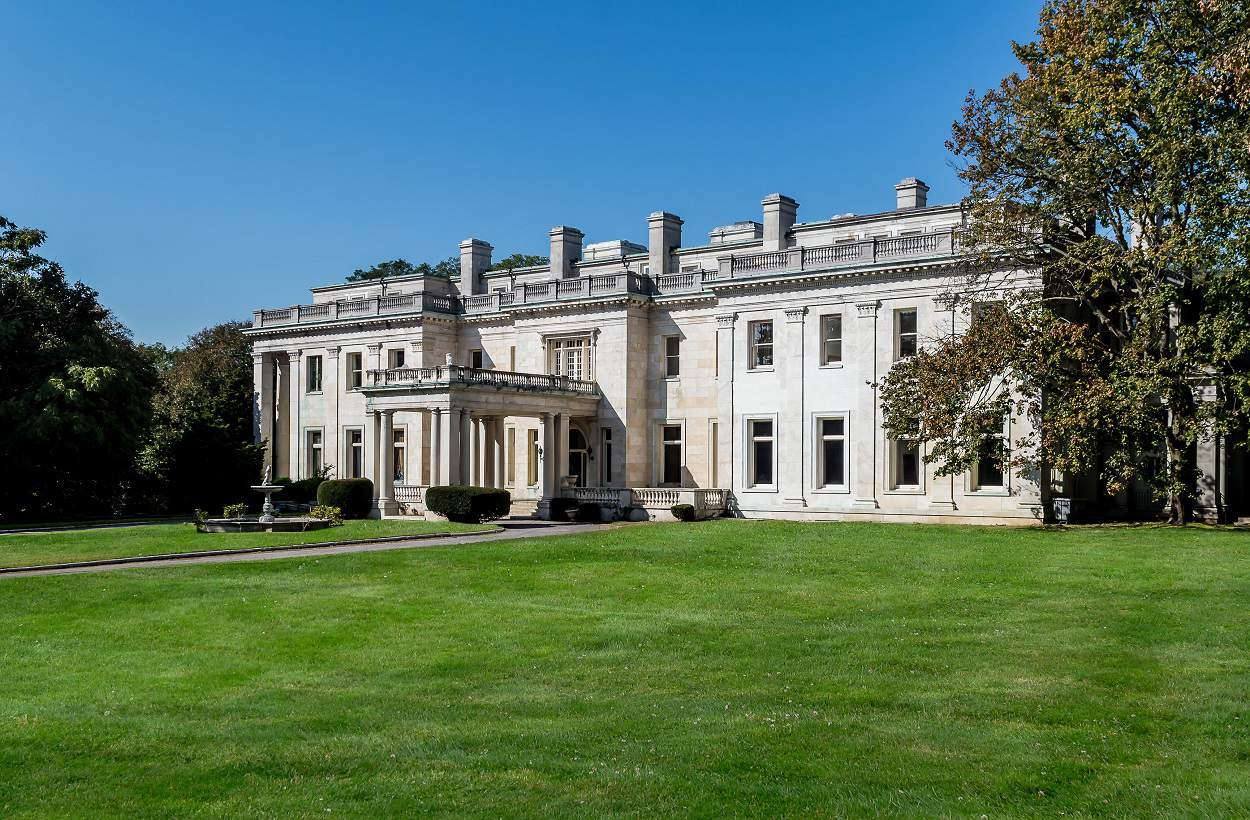
For those who love imposing, this one takes the cake. Completed in 1917 for Frank Winfield Woolworth, the retail magnate, Winfield Hall is one of the most opulent Gold Coast mansions in Glen Cove. Designed by architect Charles P.H. Gilbert in the Italian Renaissance style, the mansion features a white marble exterior and grand Corinthian columns. The interior includes a massive marble rotunda, intricately carved staircases, and rooms filled with gilded details and ornate plasterwork. Woolworth, who tragically lost his wife shortly after moving in, used the home to host extravagant parties. Today, Winfield Hall is privately owned but remains an iconic symbol of the wealth and power of early 20th-century Long Island.
3. Caumsett
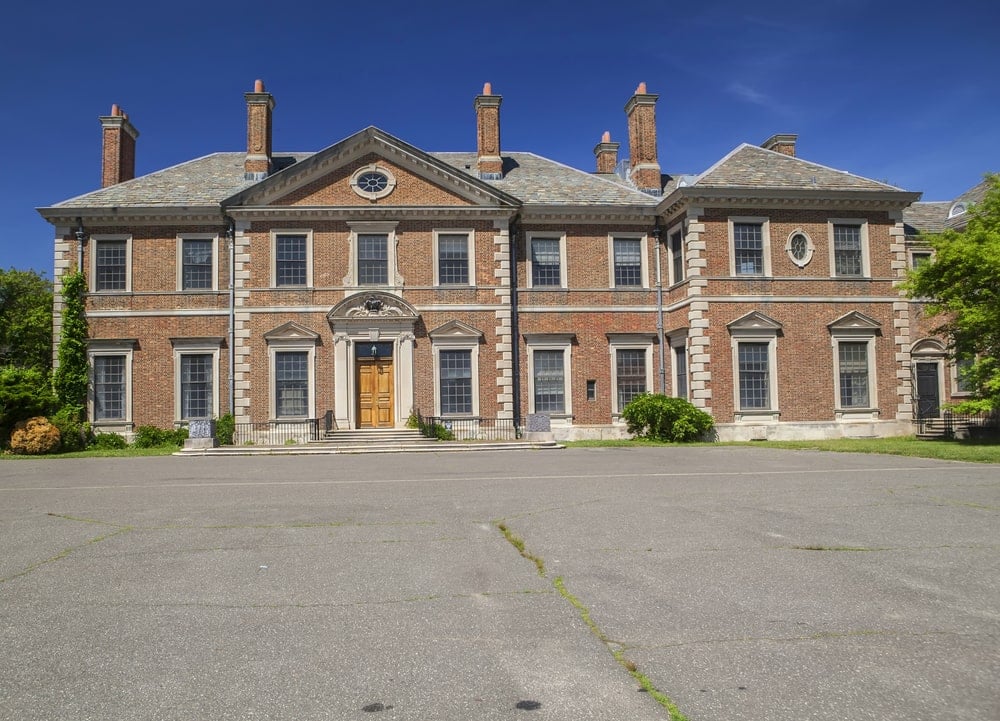
Built in 1925 by Marshall Field III, heir to the Marshall Field department store fortune, Caumsett is a sprawling mansion set on 1,500 acres in Lloyd Harbor. Designed by John Russell Pope in a Georgian Revival style, the estate includes vast stables, polo grounds, and formal gardens. The mansion’s symmetrical design, red-brick exterior, and grand portico evoke classic English country homes. Inside, Caumsett features marble floors, wood-paneled rooms, and grand entertaining spaces. Today, the estate is part of Caumsett State Historic Park Preserve, and much of the original mansion and grounds are preserved for public enjoyment.
2. Oheka Castle
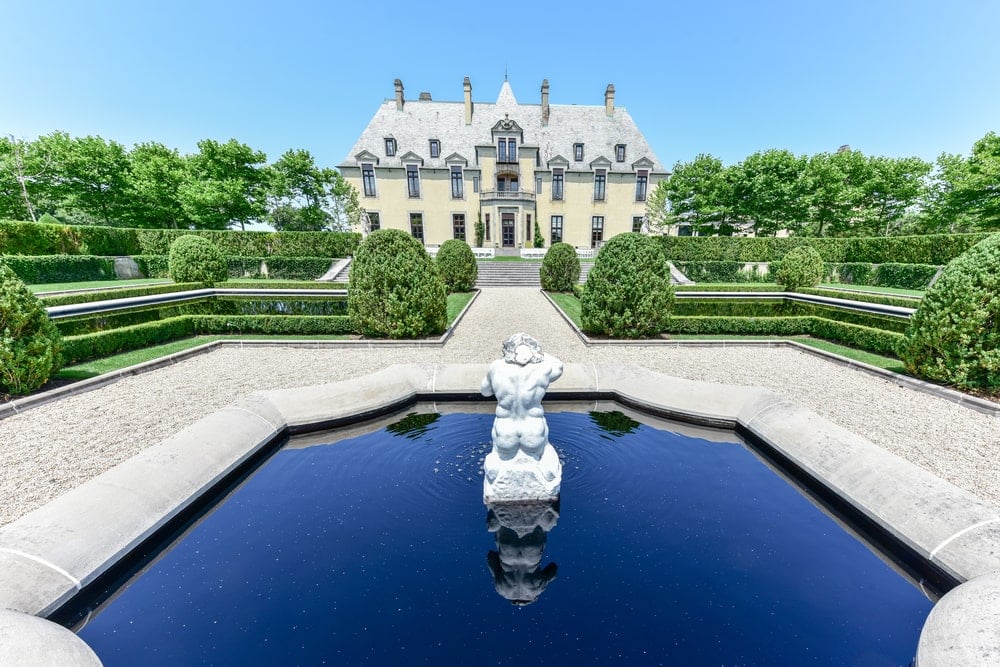
Arguably Oheka Castle is the grandest of the grand Gold Coast mansions. It’s unbelievable rivaling the greatest castles and manor homes of England. Completed in 1919 for financier Otto Hermann Kahn in Hungtington, Oheka Castle is one of the largest private homes in the US, spanning 109,000 square feet. Designed by architects Delano & Aldrich in the French Châteauesque style, Oheka Castle features tall turrets, grand staircases, and expansive terraces that overlook formal gardens inspired by Versailles. The mansion’s interiors are filled with grand ballrooms, marble floors, and elaborately decorated rooms, making it one of the most luxurious estates on Long Island. Oheka Castle fell into disrepair in the mid-20th century but was restored in the 1980s by developer Gary Melius. Today, it operates as a hotel and event venue, hosting weddings and film productions.
1. Killenworth
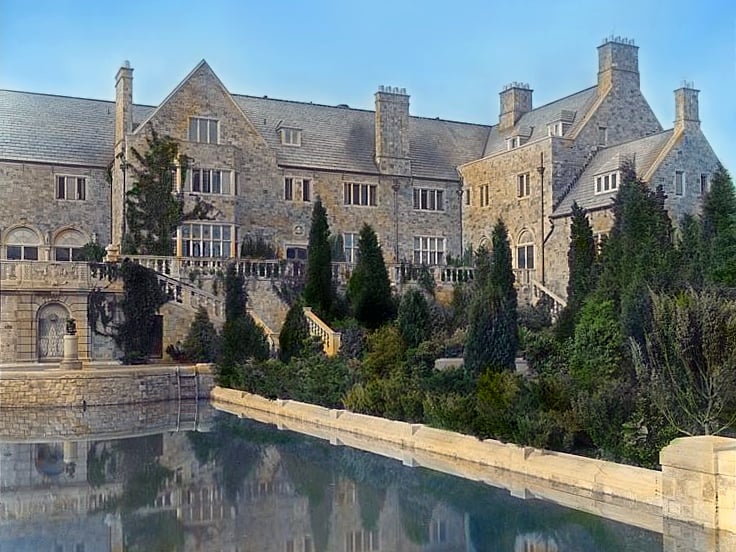
Oil money was bound to make the list lol and here it is. Killenworth, built in 1912 by George Dupont Pratt, heir to the Standard Oil fortune, is one of the largest of the Gold Coast mansions. Located in Glen Cove, New York, it was designed by Trowbridge & Ackerman in the Tudor Revival style, the mansion features massive brick and stone construction, a grand entrance hall, and towering chimneys. Inside, Killenworth is filled with opulent details, including grand staircases, wood-paneled libraries, and marble fireplaces. The estate sits on 33 acres of gardens and woodlands, with several outbuildings and cottages. In 1951, the Soviet Union purchased Killenworth for use as a diplomatic retreat, and it remains in use by the Russian Federation, though its immense size and architectural grandeur continue to captivate historians and architectural enthusiasts.





